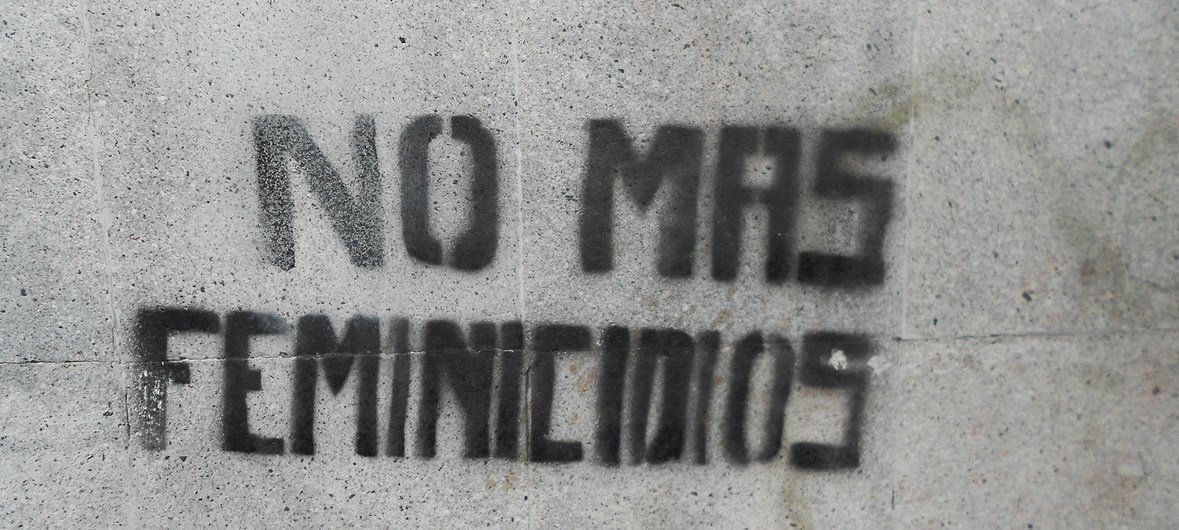Every 10 minutes, partners and family members killed a woman intentionally in 2024 and that trend is growing, according to the UN.
Gender-related killings, known as femicide, are the most brutal and extreme manifestation of violence against women and girls.
The latest report from the UN Office on Drugs and Crime ( UNODC ) and UN Women , released on the International Day for the Elimination of Violence against Women shows that femicide is rising around the world.
Here's what you need to know about femicide.
Femicide v homicide
Femicide is defined as an intentional killing with a gender-related motivation. It is different from homicide, where the motivation may not be gender-related.
Femicide is driven by discrimination against women and girls, unequal power relations, gender stereotypes or harmful social norms.

It can occur at home, in workplaces, schools or public and online spaces. It can be caused by intimate partner violence, sexual harassment and violence, harmful practices and trafficking.
Family and partner violence
In 2024, around 50,000 women and girls worldwide were killed by their intimate partners or other family members, including fathers, mothers, uncles and brothers; that's an average of 137 women or girls every day.
Current and former intimate partners are by far the most likely perpetrators of femicide, accounting for an average of 60 per cent of all family-related killings.
Beyond the family
Gender-related killings take place in many contexts beyond the private sphere.
They can be related to rape or sexual violence by someone unknown to the victim.
Femicide can be linked to harmful practices such as female genital mutilation or so-called honor killings or the result of hate crimes linked to sexual orientation or gender identity.
It is often connected with armed conflict, gangs, human trafficking and other forms of organized crime.
Global problem
Femicide is a global crisis that affects women and girls in every country.
In 2024, Africa recorded the largest numbers of female intimate partner and family-related killings with an estimated 22,600 victims (3 victims per 100,000).

The Americas and Oceania also recorded high rates of family-related femicide, (at 1.5 and 1.4 per 100,000 respectively), while the rates were significantly lower in Asia and Europe (at 0.7 and 0.5 per 100,000 respectively).
UN Women says the numbers are "alarmingly high," but has warned that the true scale of femicide "is likely much higher" due to under-reporting.
Groups at risk
Women in public life, including politicians, journalists, and human rights and environmental defenders, face escalating violence both online and offline.
Technology-facilitated violence, such as cyberstalking, coercive control, and image-based abuse, can escalate offline and, in some cases, leads to femicide.

One in four women journalists globally and a third of women parliamentarians in Asia-Pacific have received online death threats.
The deaths of 81 women environmental defenders and 34 women human rights defenders were reported in 2022.
Indigenous women also face disproportionate risks and transgender women face rising targeted killings worldwide.
Why is femicide increasing?
An increase in femicide is being driven by persistent gender inequality, discrimination norms, and escalating violence in conflict and displacement settings.
Limited accountability, weak protection systems, and online harassment further heighten risks.
Crises, economic insecurity, and shrinking civic spaces also intensify lethal violence against women and girls.
What is the UN doing to prevent it?
The UN works to prevent femicide by strengthening legal frameworks, supporting survivor-centred services, and improving the gathering of data.

It assists states in prevention strategies, trains law enforcement agencies and monitors violations and supports public campaigns that challenge harmful norms.
Goal 5 of the globally-agreed Sustainable Development Goals which relates to gender equality, and The Convention on the Elimination of All Forms of Discrimination against Women ( CEDAW ), adopted in 1979 by UN Member States, are two core international instruments which address gender-based violence.






